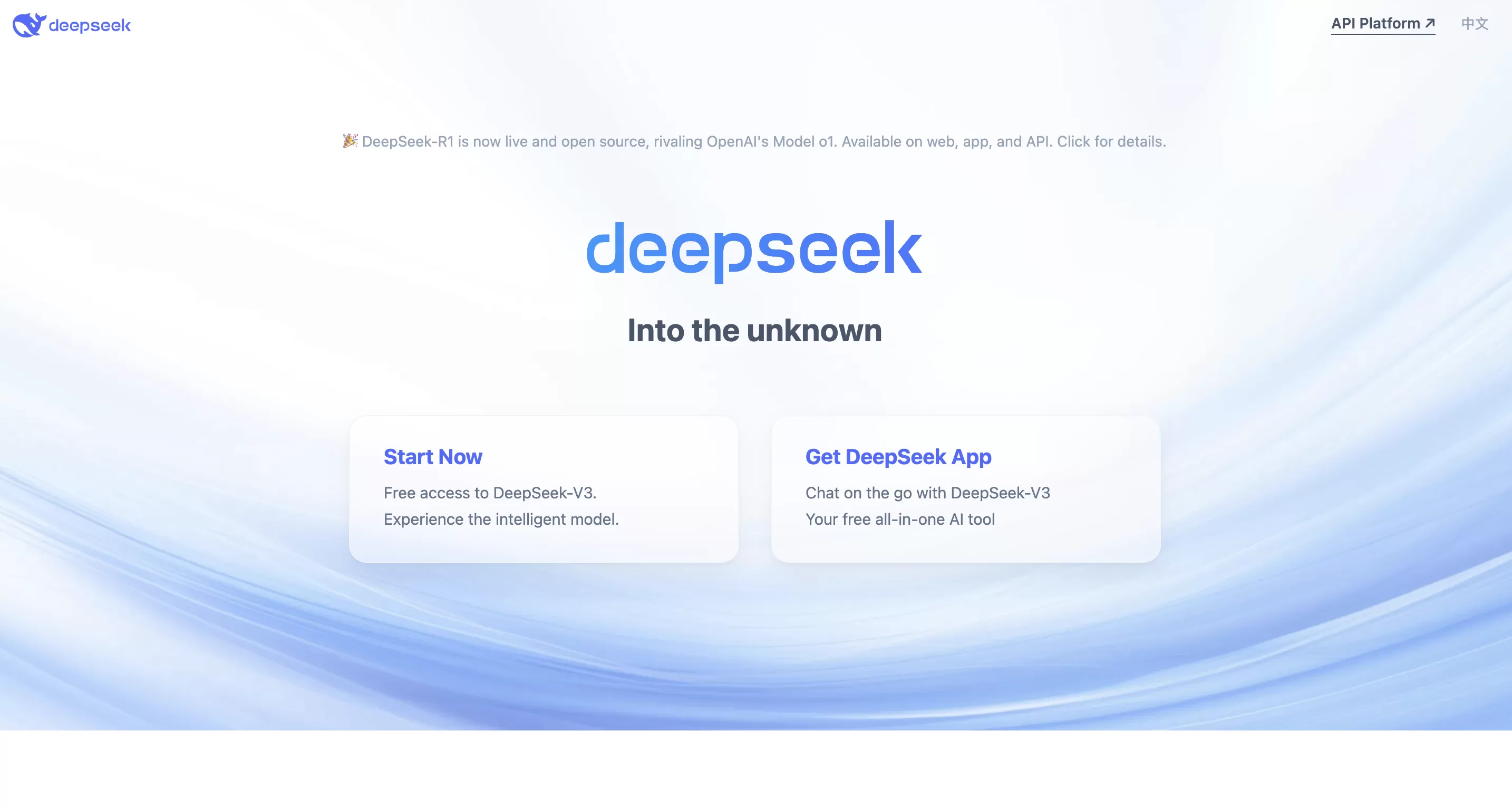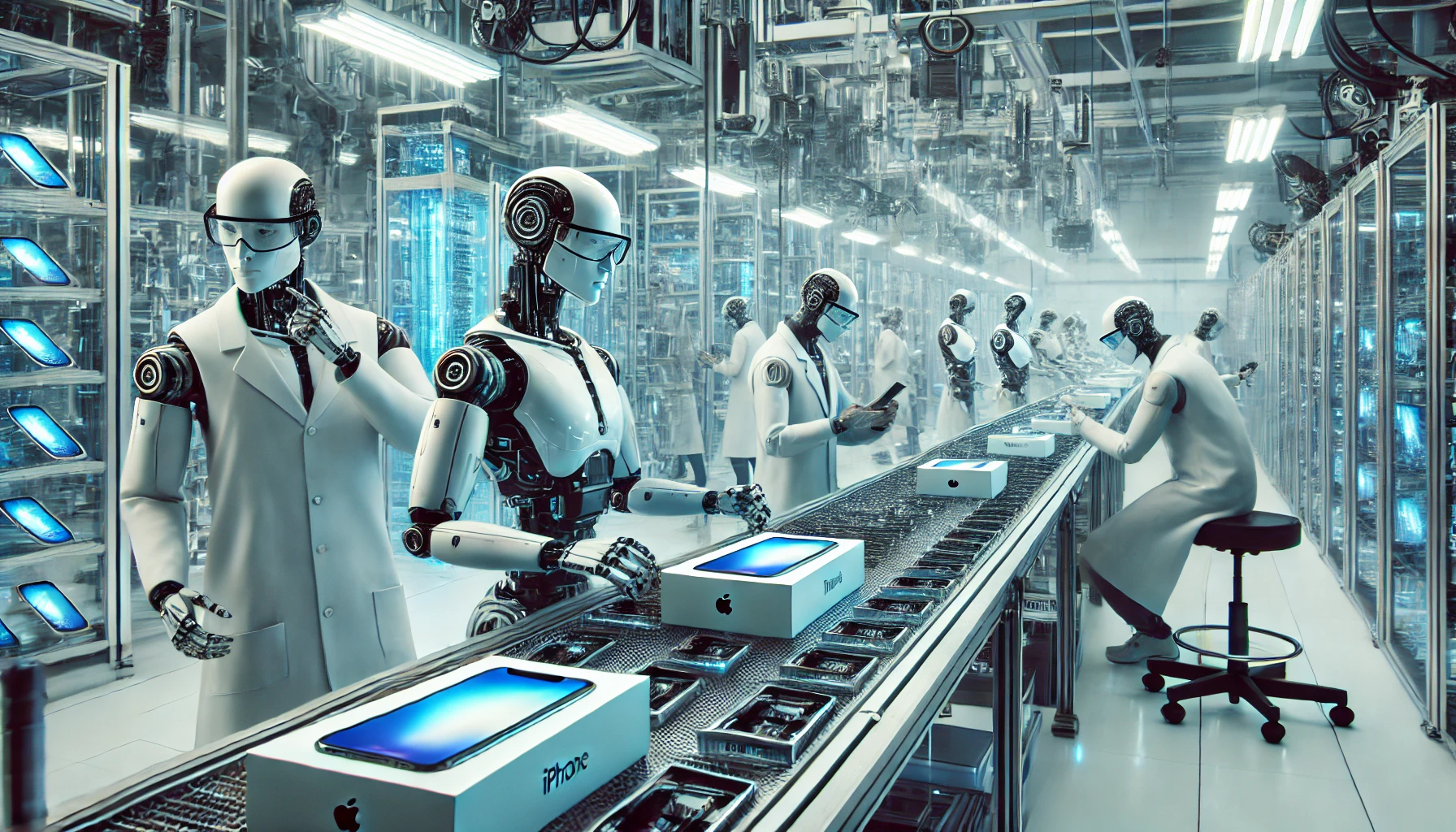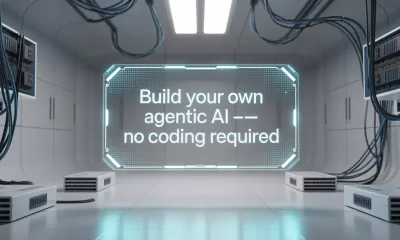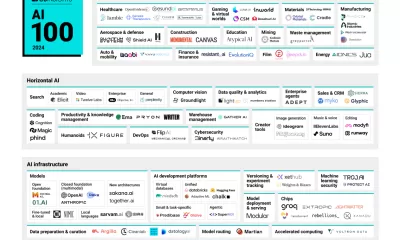Tech
Anthropic’s Claude and the Rise of Autonomous AI Agents
Explore the transformative potential of AI autonomous agents in revolutionising business processes and unlocking new levels of productivity and innovation.
Published
6 months agoon
By
AIinAsia
TL/DR:
- Anthropic’s Claude “Computer Use” function allows AI to interact with software environments, mimicking human-like agency.
- Multi-agent configurations can handle workflows equivalent to five full-time employees, driving exponential productivity.
- Autonomous AI agents face challenges, but their potential to transform business processes and unlock innovation is immense.
The line between human and machine capabilities is increasingly blurring. Large language models like ChatGPT and Claude have shown remarkable prowess, yet they have largely served as co-pilots, assisting users with specific tasks rather than acting autonomously.
Yet, Anthropic’s latest innovation, Claude “Computer Use,” is set to redefine this dynamic, bringing us closer to AI with human-like agency.
This article explores the transformative potential of Anthropic’s Claude and the rise of autonomous AI agents in revolutionising business processes.
Beyond Co-Pilot Assistance
Last month, Anthropic unveiled a groundbreaking feature via its API — Claude “Computer Use.” Despite its unassuming name, this function represents a significant leap towards AI autonomy. Claude “Computer Use” enables the AI to interact directly with software environments and applications, performing tasks such as navigating menus, typing, clicking, and executing complex, multi-step processes independently.
This functionality surpasses traditional robotic process automation (RPA) by not only performing repetitive tasks but also simulating human thought processes. Unlike RPA systems that rely on pre-programmed steps, Claude can interpret visual inputs, reason about them, and decide on the best course of action. For instance, a business might task Claude with organising customer data from a CRM, correlating it with financial data, and then crafting personalised WhatsApp messages—all without human intervention.
- Access the CRM system and extract customer data.
- Correlate the extracted customer data with financial data from the financial management system.
- Analyse the correlated data to identify key insights and trends.
- Craft personalised WhatsApp messages based on the analysed data.
- Send the personalised WhatsApp messages to the respective customers.
However, relying solely on Claude’s “Computer Use” can be slow due to its step-by-step mimicry of human actions. Additionally, this function requires exclusive access to a computer when working, which may limit its practicality in certain scenarios.
The Value of Multi-Agent Configurations
While Anthropic’s “Computer Use” offers a deeper technical integration, platforms providing AI agents highlight the practical applications of these technologies.
“Agents let teams unleash their output based on their ideas, not their size,” Vassilev explains.
Each set of agents provided by Relevance is estimated to handle workflows equivalent to what would typically require five full-time employees. This could include activities such as lead qualification, personalised onboarding, and proactive customer success outreach—tasks that would be prohibitively resource-intensive without automation.
The real value lies in deploying multiple specialised agents. Just as businesses organise teams by expertise, AI agents designed for specific tasks—like research, outreach, or documentation—can collaborate to drive exponential productivity. These agents integrate seamlessly across workflows, compounding efficiency gains without interpersonal friction or the need for additional human oversight.
The Autonomous Edge
The key distinction between co-pilots and autonomous agents lies in execution. Autonomous agents can execute tasks independently, freeing up human roles for oversight and strategic work.
“A co-pilot makes you twice as productive, but an autonomous agent lets you delegate the work entirely, leaving you to review the output.”
For example, Relevance uses their own AI agents to research new customer signups, generate tailored recommendations, onboard users by pre-creating tools customised to their needs, and follow up with personalised communications. These agents shift human roles from task execution to oversight, allowing more time for strategic and creative work.
Trust and Guardrails
Despite their potential, AI agents are not infallible. Deploying AI agents is akin to onboarding a new hire, requiring strong human-in-the-loop processes to ensure safe and effective performance.
“You wouldn’t let a new hire send an email to your customer’s CEO without oversight. Similarly, AI agents require a strong human-in-the-loop process.”
Setting guardrails about what AI agents can and cannot do, and ensuring they are trained properly is crucial for their successful integration into business processes.
Challenges and the Path Forward
Autonomous AI agents face organisational wisdom gaps, as unique processes often reside in the minds of subject-matter experts, making them difficult to document and automate. However, combining Anthropic’s “Computer Use” with multiple AI agents opens up automation possibilities that were inconceivable even six months ago for non-repetitive, creative, or low-scale activities.
As tools like Anthropic’s “Computer Use” (still in Beta) and Relevance’s AI agents mature, businesses will achieve more with fewer resources. Organisations will no longer be constrained by headcount, human roles will shift toward oversight and innovation, and ambitious goals and innovative solutions can be unlocked.
Embracing the Future of AI
The potential for autonomous AI agents to transform business processes is immense. As these technologies continue to evolve, the landscape of work will shift, allowing organisations to achieve more with fewer resources and unlocking new levels of innovation and productivity.
Join the Conversation:
What are your thoughts on the future of AI and AGI in Asia? How do you envision these technologies transforming your industry? Share your experiences and insights below, and don’t forget to subscribe for updates on AI and AGI developments here. We’d love to hear your stories and predictions for the future!
You may also like:
- Unleashing the Power of AI Agents
- Rising Apprehensions As AI Takes Over More Human Tasks
- Unravelling the Mystery of AI Consciousness
- Or tap here to try a free version of an AI chatbot.
Author
Discover more from AIinASIA
Subscribe to get the latest posts sent to your email.
You may like
-


Upgrade Your ChatGPT Game With These 5 Prompts Tips
-


Build Your Own Agentic AI — No Coding Required
-


Can PwC’s new Agent OS Really Make AI Workflows 10x Faster?
-


Forget the panic: AI Isn’t Here to Replace Us—It’s Here to Elevate Our Roles
-


How To Start Using AI Agents To Transform Your Business
-


AI 100: The Hottest AI Startups of 2024 – Who’s In, Who’s Winning, and What’s Next for Asia?
Tech
Grok AI Goes Free: Can It Compete With ChatGPT and Gemini?
Want to inspire your team? Use these 10 ChatGPT prompts to energise, motivate, and foster collaboration for better results.
Published
4 months agoon
February 4, 2025By
AIinAsia
TL;DR – What You Need to Know in 30 Seconds
- Grok AI, developed by Elon Musk’s xAI, is now available for free without requiring an X (formerly Twitter) account.
- The AI chatbot is accessible via a standalone iOS app and a web version at Grok.com.
- Free users face limitations: 10 requests every two hours, 3 image analyses per day, and 4 image generations per day.
- Grok’s speed is impressive, but its accuracy and safety features raise concerns.
- Unlike other AI chatbots, Grok has fewer content restrictions, allowing more controversial or unfiltered outputs.
- While popular on the App Store, Grok still lags behind ChatGPT and Gemini in accuracy and versatility.
Grok AI Is Free—But Should You Use It?
In 2025, it seems like every tech company is launching its own AI chatbot. Musk-owned X (formerly Twitter) jumped into the space in late 2023, offering its AI bot, Grok, exclusively to Premium subscribers. But that limited access meant most users stuck with well-known alternatives like ChatGPT and Google Gemini.
Now, Grok is free—and you don’t even need an X account to use it. The real question is: Is it worth your time?
Grok Goes Standalone: Web & iOS Access
As of January 2025, Grok AI is now available as a free app on iOS and as a web app at Grok.com. Previously, only X Premium subscribers could access it through the X platform. Now, anyone can use it—no X account required.
However, there are limitations:
- Free users get only 10 queries every two hours.
- Image analysis is capped at three per day, and image generation at four.
- Premium users (X Premium and Premium+) get significantly higher limits.
While it’s promising that Musk’s AI is breaking out of X, the big question remains—will people actually use it?
Is Grok a Serious Competitor to ChatGPT and Gemini?
Grok is currently the fourth most popular free app on the iOS App Store—just below ChatGPT but way ahead of Google Gemini (ranked 49th). However, downloads don’t equal long-term success.
Here’s how Grok compares to ChatGPT and Gemini:
✅ Pros:
- Fast responses – noticeably quicker than ChatGPT Free.
- Real-time data from X – gives updates on current trends.
- Less restrictive content policies – unlike OpenAI and Google, Grok allows some content that other AIs filter out.
❌ Cons:
- Limited accuracy – struggles with complex logic and factual correctness.
- More permissive – could lead to misinformation, bias, or even copyright issues.
- Fewer advanced features – lacks the depth of ChatGPT and Gemini in coding, document analysis, and creative writing.
Grok’s Unfiltered Approach: A Strength or a Problem?
One unique aspect of Grok is its looser content moderation. Unlike ChatGPT, which refuses certain requests due to ethical concerns, Grok is more lenient.
This has raised some concerns:
- Grok has been caught generating copyrighted content—something ChatGPT and Gemini avoid.
- Its image generation capabilities allow real-world figures, raising deepfake and misinformation concerns.
- Some reports suggest that its unfiltered nature can lead to offensive or inappropriate responses.
While this may attract users looking for less-restricted AI, it also poses a potential reputational risk for xAI.
Can Grok Survive the AI Wars?
Grok has potential, but it faces stiff competition. ChatGPT remains the industry standard, and Google Gemini is increasingly strong in multimodal capabilities.
While Grok’s speed and real-time X integration make it interesting, its accuracy, safety, and usefulness will determine whether it can truly compete in the long run.
For now, if you’re curious, it’s free—so why not give it a shot? But if you need an AI that’s reliable and versatile, ChatGPT and Gemini still lead the pack.
Let’s Talk AI!
How are you preparing for the AI-driven future? What questions are you training yourself to ask? Drop your thoughts in the comments, share this with your network, and subscribe for more deep dives into AI’s impact on work, life, and everything in between.
You may also like:
- Elon Musk predicts AGI by 2026
- Asia on the Brink: Navigating Elon Musk’s Disturbing Prediction
- The AI Age is Here—But Can You Ask the Right Questions?
- Or visit X to try Grok AI for free now by tapping here.
Author
Discover more from AIinASIA
Subscribe to get the latest posts sent to your email.
Tech
DeepSeek’s Rise: The $6M AI Disrupting Silicon Valley’s Billion-Dollar Game
DeepSeek just launched for under $6 million, challenging Big Tech dominance and proving cost-effective AI is possible. How will they respond?
Published
4 months agoon
January 31, 2025By
AIinAsia
TL;DR – What You Need to Know in 30 Seconds
- DeepSeek, a Chinese AI startup, just dropped a bomb on the AI scene—its AI assistant topped the US Apple App Store.
- Trained on Nvidia’s H800 chips for under $6 million, DeepSeek’s model is competing with AI giants who spend billions.
- This raises huge questions about US AI dominance and whether export controls on advanced chips are working.
- Unlike OpenAI’s closed models, DeepSeek is open-source, letting developers access and tweak it freely.
- The AI race just got a whole lot more interesting—so, what happens next?
Wait, Who Is DeepSeek, and Why Is Everyone Talking About It?
Imagine a relatively unknown AI startup dominating Apple’s App Store—in the United States, no less. That’s exactly what DeepSeek just pulled off.
Their AI assistant, built on the DeepSeek-V3 model, blew up overnight, surging to the top of the free app charts. The hype was so intense that cyberattacks took the app down temporarily. Yep, they got too popular, too fast.
But here’s what’s really wild:
💡 DeepSeek built a cutting-edge AI model for under $6 million.
💡 Silicon Valley’s AI giants? They’re spending $100M+ just to train a single model.
DeepSeek isn’t just shaking up the AI world—it’s rewriting the playbook.
Why This Matters: A Direct Challenge to US AI Dominance
DeepSeek’s rise is making a lot of people in Washington nervous.
For years, the US has controlled access to top-tier AI chips, hoping to slow down China’s AI progress. But DeepSeek trained its model using Nvidia’s H800 chips—less powerful than the restricted H100s—and still built an AI that rivals OpenAI and Anthropic.
This raises a massive question:
👉 If a startup can train world-class AI for a fraction of the cost—without cutting-edge chips—how effective are US export controls, really?
Industry insiders are now rethinking the whole “AI dominance” narrative. If cost-effective AI is possible, the whole game changes.
How Does DeepSeek Stack Up Against OpenAI?
Alright, let’s get into the real AI showdown:
Feature DeepSeek-R1 OpenAI’s o1 Performance Matches/beats OpenAI’s o1 on math & reasoning tasks Stronger in creative writing & brainstorming Cost to Train $5.6M (yes, million, not billion) Estimated $100M+ Processing Speed Up to 275 tokens/sec ~65 tokens/sec (o1 Pro) API Pricing $0.55 per million tokens (input), $2.19 (output) $15 (input), $60 (output) Hardware Needs Runs on consumer-grade GPUs (e.g., 2x Nvidia 4090s) Needs high-end, expensive hardware Open-Source? Yes—fully open-source under MIT license Nope—completely closed
🚀 Bottom line? DeepSeek isn’t just cheaper—it’s faster, open-source, and proving that AI doesn’t have to be a billion-dollar game.
But… What’s the Catch?
Not everyone’s convinced that DeepSeek is playing fair. A few major concerns have popped up:
⚠️ US Regulators Are Watching:
Washington is investigating whether DeepSeek used restricted AI chips—if violations are found, we might see more trade bans.
⚠️ Skepticism Over Costs:
Some experts aren’t buying the $6M claim—did they secretly rely on pre-trained models instead?
⚠️ Corporate Blockades:
Hundreds of businesses and government agencies have already restricted DeepSeek’s AI, citing security and intellectual property risks.
So… Is This the Beginning of a New AI Era?
DeepSeek’s rise is a wake-up call for the entire AI industry. It proves that:
✅ You don’t need billions to train a competitive AI model.
✅ Restricting hardware access might not stop innovation.
✅ Open-source AI could disrupt the power balance of AI giants.
If a tiny startup can shake up Silicon Valley this much in under two years—what happens next?
Your Turn: What Do You Think?
🔹 Is DeepSeek proof that AI development is shifting towards cost efficiency over brute-force spending?
🔹 Will this challenge OpenAI and Google’s AI monopoly, or will regulators shut it down?
🔹 Would you trust an open-source AI over a closed, corporate-controlled model?
Drop your thoughts in the comments! 👇
Want more straight-forward insights on AI in Asia? Subscribe to AIinASIA for the latest AI trends, breakthroughs, and battles that matter. 🚀
You may also like:
- Will AI Search Engines Dethrone Google?
- Editor’s Opinion: China’s AI Dominance
- Google Sets Sights on Leading Global AI Development by 2024
- Or try deepseek now for free by tapping here.
Author
Discover more from AIinASIA
Subscribe to get the latest posts sent to your email.
Business
5 Ways Humanoid Robots Are Streamlining iPhone Manufacturing
Discover how humanoid robots are revolutionising iPhone production with UBTech and Foxconn’s groundbreaking partnership. From the Walker S1 robot to futuristic upgrades, see how advanced robotics are transforming manufacturing efficiency.
Published
4 months agoon
January 25, 2025By
AIinAsia
TL;DR:
- UBTech and Foxconn are teaming up to bring humanoid robots into iPhone production.
- The Walker S1 robot is already showing what it can do, and upgrades to the Walker S2 promise even more.
- This partnership is shaking up manufacturing efficiency, addressing labour challenges, and redefining how electronics are made.
When it comes to producing the world’s most popular smartphone, Foxconn isn’t just pushing buttons—they’re rewriting the rulebook. With UBTech Robotics, they’re putting humanoid robots to work on iPhone production lines, setting a new gold standard in tech-powered manufacturing.
Curious? Here are five jaw-dropping ways these humanoid robots are flipping the script on factory floors.
1. Walker S1: A Tech Marvel in Action
The Walker S1 is not your average factory bot. After completing training in Shenzhen (yes, even robots need a training programme!), it’s heading to Foxconn’s facilities to take on tasks like:
- Carrying up to 16.3 kilos while staying perfectly balanced.
- Tackling complex jobs like sorting, assembling vehicles, and inspecting quality.
This isn’t just automation; it’s sophistication. Think of the Walker S1 as the ultimate multitasker who never takes a coffee break.
2. The Walker S2: Upgraded and Ready to Impress
The Walker S1 is just the beginning. UBTech is planning to roll out the Walker S2 with upgrades that sound straight out of a sci-fi movie:
- Better hands: Enhanced dexterity for assembling those tiny iPhone components.
- Smarter brains: Advanced AI for faster learning and task adaptation.
- More muscle: Greater payload capacity, possibly over 20 kilos.
- Sharper eyes: Improved vision systems for flawless inspections.
- Team player vibes: Better collaboration with humans and Foxconn’s other machines.
Imagine this robot as a genius coworker who lifts, learns, and doesn’t need lunch.
3. UBTech + Foxconn: The Dream Team
This isn’t a one-off project. UBTech and Foxconn have committed to a long-term partnership with big ambitions, including:
- A joint R&D lab for inventing smarter robots.
- Pilot programmes to test new manufacturing scenarios.
- Next-gen solutions for more efficient and sustainable production.
Together, they’re rethinking what “made by robots” means in the real world.
4. Smarter, Faster, Cheaper Production
Why is this partnership such a game-changer? Because it hits the holy trinity of manufacturing:
- Labour savings: No more scrambling to fill labour shortages.
- Cost cuts: Automation means lower production costs.
- Quality boosts: Robots handle precision work with fewer errors.
The takeaway? Expect your next iPhone to be made faster and smarter—and maybe even more affordably.
5. Setting the Bar for Robotics Partnerships
The UBTech-Foxconn partnership isn’t just shaking up the iPhone assembly line. It’s redefining the role of humanoid robots in industries far beyond consumer electronics. How? By:
- Scaling humanoid robots for high-volume production.
- Showing other industries how to integrate advanced robotics.
- Creating a ripple effect that could make these robots more accessible (think cars, appliances, and beyond).
It’s not just innovation—it’s a whole new industrial revolution.
So, What’s Next?
With UBTech and Foxconn rewriting the playbook, humanoid robots aren’t just here to stay—they’re here to dominate. The big question is: Will the rest of the manufacturing world keep up? Or are we heading for a robotics divide between companies who adapt and those who don’t?
Join Our Community (its Free!)
And don’t forget to subscribe for updates on AI and AGI developments here. Let’s build a community of tech enthusiasts and stay ahead of the curve together!
You may also like:
- Meet Asia’s Weirdest Robots: The Future is Stranger Than Fiction!
- Meet Tesla’s Optimus: The Humanoid Robot That Can Do Anything
- Tech in Asia: How AI is Driving the Region’s Transformation
Author
Discover more from AIinASIA
Subscribe to get the latest posts sent to your email.

Upgrade Your ChatGPT Game With These 5 Prompts Tips

If AI Kills the Open Web, What’s Next?

Build Your Own Custom GPT in Under 30 Minutes – Step-by-Step Beginner’s Guide
Trending
-

 Life3 weeks ago
Life3 weeks ago7 Mind-Blowing New ChatGPT Use Cases in 2025
-

 Learning2 weeks ago
Learning2 weeks agoHow to Use the “Create an Action” Feature in Custom GPTs
-

 Business3 weeks ago
Business3 weeks agoAI Just Killed 8 Jobs… But Created 15 New Ones Paying £100k+
-

 Tools3 weeks ago
Tools3 weeks agoEdit AI Images on the Go with Gemini’s New Update
-

 Learning1 week ago
Learning1 week agoBuild Your Own Custom GPT in Under 30 Minutes – Step-by-Step Beginner’s Guide
-

 Learning2 weeks ago
Learning2 weeks agoHow to Upload Knowledge into Your Custom GPT
-

 Business1 week ago
Business1 week agoAdrian’s Arena: Stop Collecting AI Tools and Start Building a Stack
-

 Life3 weeks ago
Life3 weeks agoAdrian’s Arena: Will AI Get You Fired? 9 Mistakes That Could Cost You Everything
































